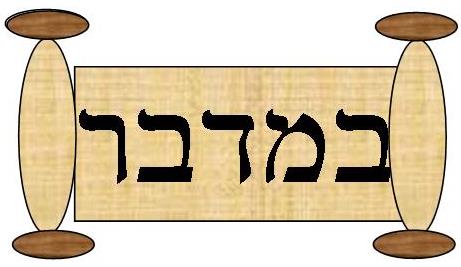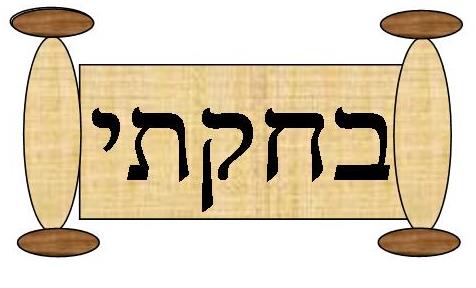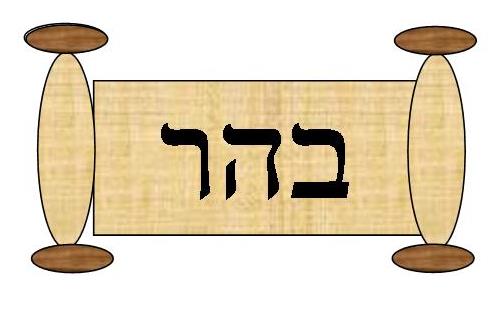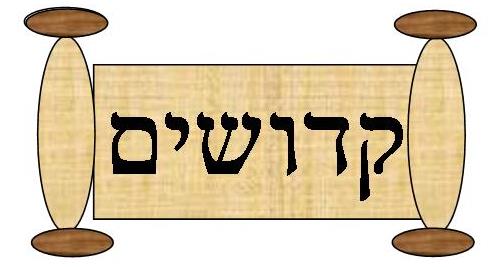Jun 14, 2019 | Torat Devorah
In Parashat Nasso , Hashem commands Moshe to teach Birkat Kohanim to Aharon and his sons. The third verse of Birkat Kohanim reads, “May Hashem lift His face towards you (yisa Hashem panav eilecha) and give you peace.” (Bamidbar6:26) The Hebrew phrase nesi’ut panim – lifting the face – is interpreted in numerous ways. Chazal explain that it involves G-d granting favor to Israel, or, more specifically, treating them with favoritism. For this reason, the verses of Birkat Kohanim are read but not translated during kriat haTorah in the synagogue (as other verses were, according to the practice at the time of the Gemara), so that the listeners would not be confused by the concept that G-d favors one nation. (Megillah 25b)
The idea that Hashem shows favoritism, however, is more than confusing; it directly contradicts another pasuk in the Torah: “For Hashem your G-d is the G-d of all power, and Master of all masters, the great, mighty, and awesome G-d who shows no favoritism (lo yisa panim) and takes no bribes.” (Devarim10:17) Indeed, the Gemara itself is puzzled by this contradiction: “The ministering angels said before the Holy One, Blessed be He, Master of the Universe! It is written in your Torah, ‘[He] shows no favoritism and takes no bribes,’ yet behold You favor Israel, as it is written, ‘May Hashem lift His face towards you!’ He answered them, Should I not favor Israel, for whom I wrote in the Torah, ‘You shall eat and be satisfied and bless Hashem your G-d,’ yet they are careful about themselves for a kezayit and a kebeitzah [i.e., they bless even after eating less than is necessary to be satiated]?!”
The Gemara’s explanation seems to be that G-d certainly does favor Israel, but they deserve this special treatment because of their willingness to do more than the law demands. But how does that answer the question? Despite Israel’s righteousness which makes G-d want to favor them, the pasuk nonetheless states that Hashem does not show favouritism!
One possible answer is based on the important idea that G-d acts toward us in the way that we act toward Him. In a real sense, we create the framework in which we live. In the words of the Chafetz Chaim, “It is known that according to how a person directs his attributes in this world, he correspondingly arouses G-d’s attributes in the world above. If his way is to ignore slights and to act with kindness and mercy towards people, he correspondingly arouses the attribute of mercy above, and the Holy One, Blessed be He, has mercy on the world because of him. and he merits also that the Holy One, Blessed be He, has mercy on him and ignores his sins.”
(Shmirat HaLashon, Shaar HaZechira, Perek Sheini)
Thus, G-d’s favoritism – that is, going beyond the demands of strict justice – is a direct result of Israel’s willingness to do more than the law demands. The verse stating that G-d does not show favoritism refers to a normal case that demands justice. Israel does more than G-d’s law demands, however, so G-d acts toward Israel beyond the letter of the law. That is, in its own way, an aspect of justice.
Prepared by Devorah Abenhaim

Jun 7, 2019 | Torat Devorah
God commands Moses to take a census of the Children of Israel according to their families and their fathers’ household. The Israelites follow this command and do everything that God instructs. Immediately following this census, the Israelites are commanded to “encamp, every man with his standard according to his ensigns according to the insignias of their fathers’ household, at a distance surrounding the Tent of Meeting shall they encamp” (Numbers 2:2). The Alshekh asks the following questions: 1) Why, when looking at the Hebrew, is this commandment phrased as if it applied to individuals, i.e. ish a man, rather than collectively? 2) The Torah, in relation to the tribes, discusses the direction of their encampment proceeding the camp leaders. With regard, however, to the camp o Judah, we read about the direction of the camp PRIOR to the camp leaders. 3) Why does the Torah vary the manner in which it introduces the second tribe in each encampment from the others? The Midrash describes that there was some jealousy between the tribes concerning their positions around the tabernacle, as well as the order in which they would travel. God told Moses to tell the tribes that they would occupy the same positions as their founders had occupied when they carried Jacob’s bier to burial in the cave of Machpelah. This is recorded in the Torah by the words “according to the ensigns of the houses of their fathers” (v.2). There are two other areas in which jealousy could manifest itself. 1) The 4 camps, each sharing 1 flag between them could be jealous of the composition of each camp, i.e. the tribes that had been assigned to be part of the same camp. 2) The camps that had been assigned to travel at the rear of the procession could be jealous of those marching in front. Ephraim, for instance, could be jealous of Reuben and Judah, and Dan of all the others. Since the leaders of each tribe could still have felt inferior to the 4 camp leaders, the Torah hints at the positioning of the sons at Jacob’s bier. To avoid Judah boasting that he was the leader, the Torah speaks about “AND those encamping in an easterly direction”, i.e. the other two tribes are described as an integral part of the camp of Judah. Displaying similar sensitivity for the members of the camp of Dan – the rearguard –the Torah, (v.31) states that though they traveled last, it was ‘ledigleyem’, according to THEIR flags; as if all the other camps were subordinate to the camp of Dan, and not vice-versa. In the case of the tribes Issachar and Zevulun, the Torah writes u-fekudeyhem, THEIR counted ones (plural), to point out that unity existed. Though each one considered himself a separate unit, they related to one another in such a way that each one assumed responsibility for the other’s physical or spiritual well-being (Zevulun providing Issachar’s material needs, Issachar studying Torah and sharing his merit with Zevulun). The reason the Torah writes “the camp of Ephraim according to their armies westward”, is for that it is a compliment to the angels who had become the armies of Israel – as God’s presence is conceived of as emanating from the West (the Holy of Holies being the most western part of the tabernacle).
When the Torah discusses the issue of counting the people of Israel, we learn that this is an act of elevating the Israelites, i.e. numbering them. This was performed through their handing over the half shekel, which formed their ransom money for their sin of the golden calf. This is the reason the the Torah employed the term ‘ki tissa et rosh’ – when you “lift the head” when describing their being counted. This is in contrast with the members of the tribe of Levi who had no need to pay a ransom for their soul seeing they had not been guilty of that sin. This is why the Torah introduced the instruction to count the Levites (3:15) with the words “pakad et bnei Levi” – “count the members of the tribe of Levi.” If all this is correct, why did the Torah change its wording when it came to counting the Kehatites and employ the same term ‘nasso’ when instructing Moses and Aaron to count them? Perhaps the fact that the Kehatites were entrusted with a task such as carrying the Holy Ark and the Table which required them to enter the Tabernacle was a special elevation for them and this is why the Torah wanted us to know this and wrote the term ‘nasso’. It is a relative term and shows that their function was more highly rated than that of the family of the clan of Gershon, although Gershon was the older of Levi’s sons. The reason that God chose the Kehatites for this task was that they provided “light for the world” in that Moses and Aaron were descended from. It was no more than fair that the branch of the Levites who had produced Moses and Aaron should be the ones entrusted with carrying the Torah, which Moses had communicated to the people. Our verse is careful to say – ‘meetoch bnei Isreal’, “from the midst of the children of Israel,” seeing that Kehat was the middle son of Levi’s three sons Gerson, Kehat, and Merari.
Prepared by Devorah Abenhaim

May 31, 2019 | Torat Devorah
The theme of Parshat Bechukotai is the “Tochacha” – a series of devastating predictions of what will befall the Jewish people throughout history – exile, anti-Semitism, persecution, and more.
Yet we know how much the Almighty cares for us, and He never “punishes” without “sandwiching” it with love. So it is not surprising that the “dire predictions” in this parsha also contain hidden blessings.
Rabbi Shraga Simmons explains: ‘…For example, Leviticus 26:33, God declares that “I will scatter you among the nations.” This is a hidden blessing, because if the Jewish camp is geographically divided, then when one community is persecuted, the other can carry on. Also, Leviticus 26:22 says that when the Jews are in exile, the “Land [of Israel] will be desolate.” This is a hidden blessing, because throughout the millennia – as numerous empires conquered the Land, and countless wars were fought for its possession – astonishingly, no conqueror ever succeeded in permanently settling Israel or causing the desert to bloom. This, of course, made it easier for the Jewish people to return in the 20th century and resettle their homeland – a hidden blessing. God cares for us so deeply, giving us the confidence that in life, every cloud has a silver lining.’
If you will keep my mitzvahs … the land will yield its produce … and I will give you rain” (Lev. 26:3). It’s interesting that the Torah promises an abundance of material and physical blessings in exchange for following the Torah. Most of us would probably expect a promise of spiritual return such as the promise of Heaven, paradise, or eternal life.
Rabbi Ron Jawary offers some insight into this verse: ‘Interestingly, the Torah never makes an explicit mention of life beyond this world. Perhaps what the Torah is teaching us is that we shouldn’t think the world and all the blessings in it have nothing to do with a spiritual life. The idea behind this could be that the physical, material blessings are truly spiritual blessings in that they provide us with an opportunity to connect to the Divine.
The more we understand this, the greater is our opportunity to become a conduit for God’s blessings. In fact, the Talmud expands on this and points out that we all have certain skills and talents, and should strive to share those talents with those around us. In doing so, we’re taking the physical blessings we’ve been given and transforming them into an eternal spiritual connection with God.’
Prepared by Devorah Abenhaim

May 24, 2019 | Torat Devorah
In many ancient cultures, slavery was a social and economic necessity. In Parashat Behar, the Torah outlines the laws of slavery that would apply throughout B’nei Yisroel (the Jewish people) upon their settlement in Israel. Unlike some of the prevalent practices, for B’nei Yisroel , the institution of slavery would exist only within a carefully defined framework of laws that ennoble the Jewish slave. According to these laws, the slave could not be sold on an auction-block; rather, the transaction must be made quietly and with dignity (25:42). Furthermore, the master must constantly treat the slave with respect. The master could request from the slave only certain types of dignified service – he could never command the slave to tie his shoes or take his dirty clothes to the wash house because these violate the personal dignity of the slave (Rashi, 25:39). For this reason the Gemara says, “Anyone who acquires a Jewish slave actually acquires a master for himself” (Kiddushin 22b).
The parsha also specifies certain laws that apply in the event that a Jew is sold as a slave to a non-Jew. The Torah obligates other Jews to attempt redemption of the Jewish slave as soon as possible. Nevertheless, even when owned by a non-Jew a Jewish slave must be freed at the 50th sabbatical year, or yovel. In explanation, the Torah concludes: “ki li B’nei Yisroel avadim, avadai hem asher hotzeiti otam meeretz mitzraim. Ani Hashem Elokechem – Because B’nei Yisroel are servants to Me. They are my servants since I took them out of the land of Egypt. I am Hashem your G-d” (25:55). B’nei Yisroel cannot remain in a state of servitude to another person since they are naturally the servants of Hashem. The yovel year at least provides an automatic mechanism for the emancipation of all slaves. Our parasha nevertheless concludes with two pesukim (sentences) that seem out of place (26:1-2). They constitute a common refrain in which the Torah forbids idol worship, commands observance of the Shabbos, and reiterates the reverence we owe to the Beis Hamikdash (Temple). Why are these laws juxtaposed with the laws of Jewish slaves?
Shelomo Dobkin of NCSY explains: Toras Kohanim (9:4, quoted in Ramban) comments that the two verses actually refer to the case where a non-Jew owns a Jewish slave, and the juxtaposition reflects a deeper insight that physical service often produces similar religious practices. In other words, the Jewish slave working for a pagan master will quickly forget his obligations to Hashem, neglecting to abide by the prohibition against idolatry and neglecting his dedication to fulfill Torah commandments. Therefore, the Torah reinforces the essential elements of Judaism – monotheism, Shabbos (G-d as Creator of the world), and the Beis Hamikdash (the national center of G-d’s chosen people). These special reminders for the Jewish slave help him reject the influences of his non-Jewish master. The Seforno (26:2) views this special reminder to a Jewish slave owned by a non-Jew as a metaphor that can be extended to any region in which Jews live under the aegis of a foreign society. Just as the Jewish slaves of old, Jews throughout the world can benefit from these reminders in order to revitalize their dedication to our common heritage.
Prepared by Devorah Abenhaim

May 10, 2019 | Torat Devorah
Numerous mitzvot appear in Parshat Kedoshim, the parsha that addresses the topic of holiness (kedushah). There is no apparent system that sustains the mitzvot referred to in this parsha. The verses jump from mitzvot between Man and Hashem (bein Adam laMakom) to those between Man and fellow Man (Adam leChavero); from halachot that apply in the Beit HaMikdash to those that pertain to toil in the fields.
Why didn’t Hashem arrange these mitzvot in an order similar to the Mishneh Torah of the Rambam, or of the Shulchan Aruch? Yes- in reference to certain verses in the parsha Chazal explain the juxtaposition of the verses . However, in the basic level of understanding the text there is need for clarification of the order of the verses.
The Midrash (Devarim Raba, Parsha 6) portrays how the mitzvot accompany us in all of our endeavors. When a house is built, a guard rail (ma’akeh) must be erected; the placing of a door requires the fixing of a mezuzah. Wearing clothes includes the prohibtion of kilayim (wool and flax); while shaving some actions are forbidden. While plowing and placing seed in fields the Torah outlines how to proceed; upon walking we may encounter a mother bird hovering over her children- kan tzipor.
What concept does this Midrash convey to us? Rav Yechezkel Yakobson, and Rav Re’uven Ungar of Sha’alvim yeshivah explain: When the Holy One, Blessed Be He, gave us the Torah, He desired that it be a Torah of life. Life together with Torah. Not two parellel levels of existence. Rather, Torah that applies every second and in every situation. If the aim is to merely comprehend what is written in the Torah, indeed the mitzvot in Parshat Kedoshim should be arranged according to topics. But that is not the point- the Torah is intended to accompany us throughout life. Life is dynamic and multifaceted; when a person is on a street, multiple issues appear. The person is expected to confront and deal with all these issues in accordance with the Torha. Therefore the mitzvot in this parsha appear in a dynamic and jarring fashion, in accordance with the goal of the Torah. The beginning of the parsha records the mitzvah of striving for holiness. When the Jewish People attain this level, the Mitzvot do not appear merely as a collection of laws. They constitute a unified, harmonious structure of living Torah.
Prepared by Devorah Abenhaim

May 3, 2019 | Torat Devorah
In this week’s Parsha, Hashem commands the Jewish People: “You shall carry out my laws (Mishpatim) and my decrees (Chukim)” (18:4). It is well known that a Mishpat is an instruction whose reason is obvious to us, while a Chok is a Mitzvah whose reason is not clear to us. For example, we are required to honor our parents and take care of them, minimally to thank them for all they have done for us. Therefore, because we know at least part of the reason behind it, the Mitzvah to honor our parents is considered a Mishpat, not a Chok. However, in the very next Pasuk (verse), we are told, “You shall observe my decrees and my laws,” reversing the order of decrees and laws. Why in the first Pasuk was Mishpatim listed first, but in the very next Pasuk listed second?
Rav Yisroel Salanter (1810-1883), founder of the Mussar (Ethical Teachings) movement, explains that in the first Pasuk, the order presented is the one that can be readily understood – first the Mishpatim and only then the Chukim. It is only natural for that which we understand to precede what we do not understand. The next Pasuk then places Chukim first because it is describing the only way to guarantee a life of dedication to both Mishpatim as well as Chukim.
If a person lives a life of Mishpatim first, namely only adhering to religious precepts because he sees how just and proper they are, then there will come a time when it will not be worth it to simply ignore them. But if a person lives a life of Chukim first, and follows them even though he may not fully or even partially understand them, then he will surely stick to both Chukim and Mishpatim even when doing so may become quite difficult.
Rav Avishai David was a young boy about nine or ten years old when Rav Yekusiel Fuchs (Rav of the small shul in the Bronx where the David family davened) approached him, puzzled, asked, “Why is it that none of the Orthodox shuls are doing anything to address Yom HaShoah (Holocaust Memorial Day)? How can this be? We must do something! I lost my entire family in the Holocaust-every single last one- and we have to go to the Yom HaShoah ceremonies!” When youthful Avishai approached his father and asked what he should do in response to their Rabbi’s invitation, his father immediately responded, “What do you mean?! What’s the question? The Rav said to go, you go! What’s the discussion?” The two then traveled to Temple Emmanuel, a reform temple in Manhattan, to participate in a Holocaust commemoration. They did not enter, but rather stood outside and listened to the memorial proceedings. Rabbi David’s father understood very clearly that while it is definitely ideal to understand everything we do, when a situation arises and we are in the dark, we act first and only then make the attempt to understand. If we do achieve a level of understanding, great, but if we don’t, then we continue anyway. (It should be noted that since this incident the Orthodox community has gotten very involved in Holocaust commemoration, dealing with many of the issues that prevented mainstream Orthodox involvement when the story happened. One of the main reasons for non-involvement was the view that Tisha B’Av, the fast day commemorating the destruction of the two Temples in Yerushalayim, is also a day on which we remember all Jewish tragedies, and therefore Holocaust commemoration should be included in our Tisha B’Av observance. In fact, there have been certain prayers written remembering the Holocaust that are said on Tisha B’Av. This view was very strongly held by Rabbi Yosef Dov Halevi Soloveitchik, the Rosh Yeshiva of Yeshiva University.)
Prepared by Devorah Abenhaim








